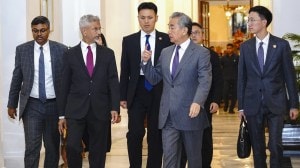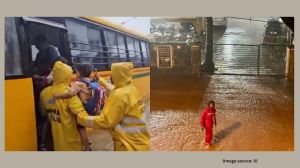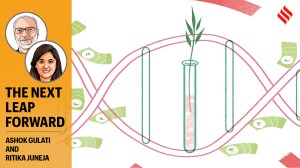‘People earning less than Rs 10K a month spend 15% of their income on buying water’: Survey
On the additional financial burden, the report noted that at least people who earn between Rs 6000 and Rs 10,000 spend 15% of their income on buying water.
 The report has called for a revision of the government's current plan on installation of the proposed 3,000 water ATMs, and instead install at least 5,000 such facilities across public, residential and commercial areas.
The report has called for a revision of the government's current plan on installation of the proposed 3,000 water ATMs, and instead install at least 5,000 such facilities across public, residential and commercial areas.Increased dependency on private water suppliers amongst low-income households, huge gap between availability and requirement of water, additional financial burden and impact of water insecurity — these are some of the findings of a recent report published this month by Greenpeace India, a non-profit organisation.
For the study, titled ‘Water access audit: Gaps, costs and beyond’, 500 households across 12 locations in Delhi were surveyed. It was found that a large number of families do not have access to a public water supply system — 34% buy drinking water from shops, 29% depend on water tankers, 21% use water ATMS, 14% use underground water tanks, while 2% borrow water from neighbours.
“There is a huge gap in need and availability of water, and this gap is being filled by purchasing water at steep prices. The data highlights that on an average, 37% of these households reported that they need at least 20-25 litres of water per day, considering the size of their families and consumption patterns. However, only 28% of these (37%) households receive adequate water,” read the report raising concern of an “acute water shortage”.
On the additional financial burden, the report noted that at least people who earn between Rs 6000 and Rs 10,000 spend 15% of their income on buying water. Additionally, 70% of respondents faced a direct impact on their monthly grocery budget due to rise in water prices. “Rising water expenditure is costing people groceries, health and education,” said the report.
It also highlighted that 38% of the respondents said they had either missed work or arrived late as they had to stand in long queues to collect water. Underscoring the burden of water insecurity on low-income households, the report said: “…particularly for women and informal workers who have no social protection or paid leave. These individuals and households not only bear the invisible cost of poor water quality but also the cost of missed work, reduced income or opportunities and increased household stress.”
Between April and June, only 20 water ATMs were installed in public spaces, while 3,000 were promised by the Delhi government in an announcement in April. Highlighting “on-ground” issues, the report noted that the ATMs do not even provide 20 litres of water and do not function round the clock in surveyed locations, including Savda Ghevra, Sakarpur Basti, Khajan Basti and Chunna basti. “Many families also said that they do not have access to these ATMs because they are located too far from their homes.”
While a significant dependence on water tankers (29% households) was noticed during the survey, the respondent families complained of “poor” water quality. “In some areas, tankers come only once a week or once in two weeks, which forces residents to depend on other private suppliers, further increasing the financial burden. Residents are forced to frequently visit the Jal Board office to request water tankers for their localities.
“Some families revealed that they have had to sometimes offer money to ensure water tankers come to their locality twice a week,” the report stated, also citing a lack of space in low-income households that does not let residents to store beyond a limited amount.
In its recommendations, the report has called for a revision of the government’s current plan on installation of the proposed 3,000 water ATMs, and instead install at least 5,000 such facilities across public, residential and commercial areas.
It said that to ensure wider accessibility, water ATMs need to be installed at labour chowks, construction sites, shops, government buildings, industries and companies. It also recommended repair of existing public water points, ensuring a regular supply of clean and safe drinking water by the Delhi Jal Board; monitoring and prevention of corruption among suppliers at water delivery points; and investment in comprehensive water infrastructure in informal settlements. It added that residential areas should not face restrictions on quantity of water and water ATMs must be functional round the clock.







